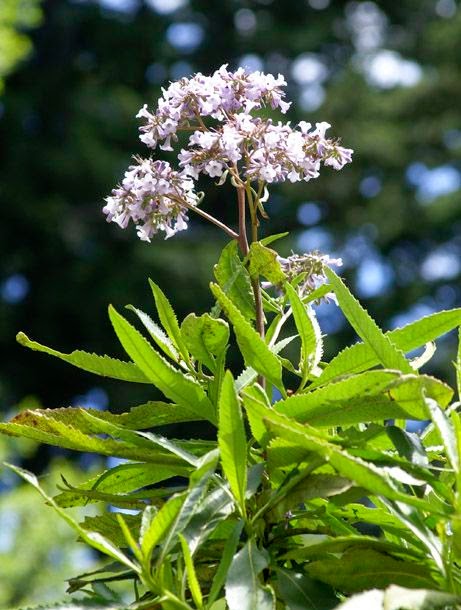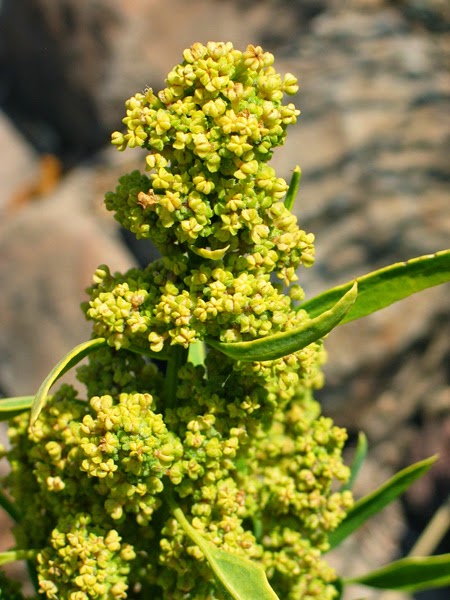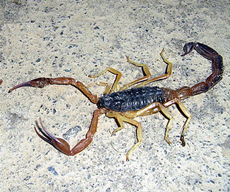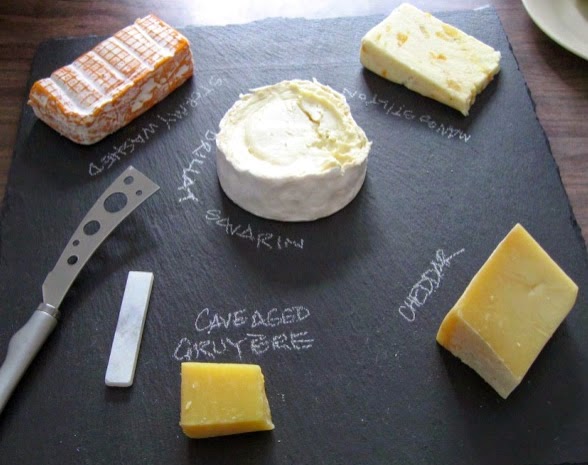 |
| Cheese |
Despite the high fat content of most forms of cheese, cheese remains an American favorite. Dairy cases are filled with different varieties of cheeses, and classic foods such as pizza, cheeseburgers, and tacos, all of which use some form of cheese, guarantee generations of cheese lovers.
The first cheese was said to have developed by accident, when milk was allowed to ferment. Whether the first cheese was formed from Mongolian yak’s milk, the African camel’s milk, or the Middle Eastern ewe’s
milk is unknown and still debated.
But the results, after thousands of years, remain the same: the earliest coagulating curds of milk carried in a shepherd’s pouch have become a tempting treat, with many different types from which to choose.
Cheese can be made from various milks. Milk from cows is typically used in the United States, but milk from sheep, goats, camels, and other animals is used worldwide. In fact, some of the world’s finest gourmet cheeses are made from sheep’s milk.
No matter what type of milk is used, the process is essentially the same. The first step is to curdle the milk, essentially causing proteins in the milk to clump.
Bacterial cultures
or certain enzymes are used to curdle the milk. Next, the liquid surrounding the curds, which is called the whey, is drained.
Then the curds are pressed into shapes. Salt may be added at this point. The freshly made cheese is then allowed to age, a process that develops its flavor. Other ingredients also may be added at this point. In general, 11 pounds of milk are needed to make 1 pound of cheese.
Knowing that, it is easy to see why cheese is dense in both calories and fat.
Like any dairy product, cheese is perishable. A general rule is that the harder the cheese, the longer it keeps. Categories of cheese are determined by the method used to make it, the type of milk used, the texture, or even the appearance of the rind. This classification system groups cheeses with common
characteristics.
Fresh Cheeses 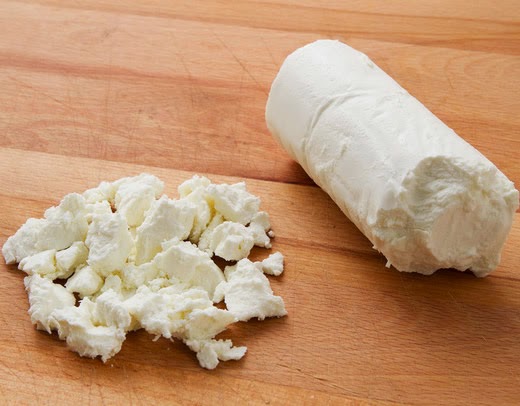 |
| Fresh Cheeses |
These cheeses were once made on the farm from surplus cream and quickly served. Today these cheeses are made with pasteurized milk, but they still have a short shelf
life and must be consumed quickly. Fresh cheeses are not allowed to ripen or ferment very long, so they have a high moisture content, a mild flavor, and a smooth, creamy texture. They generally keep for 1 week after purchase or the “use by” date.
Common types of fresh cheeses include the following:
Cottage cheese Usually thought of as a “diet” food, cottage cheese is a healthful food choice when it is made from skim or low-fat milk. Cottage cheese is only a few steps from milk. It is essentially the separation of milk into curds and whey. The curds are partially drained before cottage cheese is packaged and sold.
Cream cheese The mild white spread often used for bagels, cream cheese is a better choice than butter, but it still has a lot of fat. Up to 90 percent of the calories in cream cheese are from fat. One tablespoon has about 50 calories and about 5 grams of fat. Even
best choice.
Farmer’s cheese Often used in baking, farmer’s cheese is essentially cottage cheese that has had most of the liquid pressed out of it. It is usually sold formed as a loaf and is relatively low in fat.
Mozzarella The pizza topping of choice, mozzarella is a soft, bland cheese. Unlike other fresh cheeses, mozzarella has undergone a heating and kneading process. Whole-fat, skim, low-moisture, and fat-free versions of mozzarella cheese are available.
Fresh mozzarella
, sold in specialty and ethnic stores, is usually made from whole milk and, therefore, is higher in fat than other types.
Ricotta A common ingredient in Italian dishes, ricotta is similar to cottage cheese but has a finer texture. Ricotta was once made from whey left over from making other cheeses. Today, it is made from whey and milk.
Semisoft Cheeses  |
| Semisoft cheeses |
Semisoft cheeses are firm on the outside yet soft and moist on the inside. Because they are aged for just a few weeks, they have a soft, moist texture and mild flavor.
Semisoft cheeses are used widely in cooking because they melt smoothly and easily. They are also easy to slice and so are excellent for hors d’oeuvres or for more ordinary uses, such as sandwich toppings.
Because these cheeses are soft, they are often coated with wax or another material to keep them intact. Some types of semisoft cheeses are aged. Others are “washed” in brine, which causes them to develop a rind on the outside. These processes also intensify the cheese’s flavor and, in some instances, sodium content.
Some common types of semisoft cheeses include:
Brick The shape of this cheese is the origin of its name. When aged, it has an assertive flavor, like cheddar cheese. When it is young, it is mild.
Edam A Dutch specialty, this cheese has a mild, buttery taste. It is often sold in balls or blocks coated with red wax. It is also available smoked.
Gouda Another Dutch cheese, Gouda is sold in wedges and wheels usually covered in red wax. Like other semisoft cheeses, it has a mild flavor that becomes sharper as it ages. Gouda can be purchased as a smoked cheese.
Jarlsberg A Norwegian specialty, this cheese is often compared to Swiss cheese. It is softer, however, and milder. Jarlsberg is also typically sold in wedges.
Limburger Famed for its characteristic aroma, Limburger is one of the strongest-flavored semisoft cheeses. Limburger is easily sliced and can add a different twist to ordinary foods, such as sandwiches.
Provolone The taste of this cheese depends on its age and how it is processed. Young provolone has a mild taste and ivory color. With age, its flavor becomes stronger, its texture drier, and its color darker. The cheese is sometimes smoked or has had a smoke flavoring added to it. Provolone is often sold in loaves.
Semisoft cheeses are generally higher in calories and fat than soft cheeses. For example, 1 1/2 ounces of Edam or provolone cheese has about 150 calories and about 12 grams of fat. In contrast, the same amount of cottage cheese (made with 2 percent milk) contains about 40 calories and 1 gram of fat. However, semisoft cheeses generally contain less fat and calories than hard cheeses because less milk is used to make semisoft cheeses than hard cheeses.
Soft, White-Rind Cheeses Soft, white-rind cheeses are descendents of natural-rind cheeses, in which gray, green, and even red molds are allowed to grow on the surface of the cheese as it ripens. Most North American cheese consumers are put off by the colored mold growth, so the colorful natural-rind cheeses are nearly impossible to obtain outside of France.
Soft, white-rind cheeses are readily available, however. Instead of allowing natural mold growth, these cheeses are sprayed with white mold spores that seal the outside while allowing the interior of the cheese to maintain a soft, butter-like consistency at maturity. These cheeses garner their characteristic flavor from bacteria that grow on the outside and move inward. The result is a rich, creamy texture and full flavor. These cheeses often have fewer calories than hard cheeses.
Soft, white-rind cheeses include:
Brie A cheese originating in northern France, Brie is often sold in wedges and has a tangy, buttery flavor.
Camembert Also originating in northern France, Camembert has a velvety texture and a soft, light-yellow interior. Camembert is often wrapped in foil and sold in wooden boxes.
Blue or Blue-Veined Cheeses 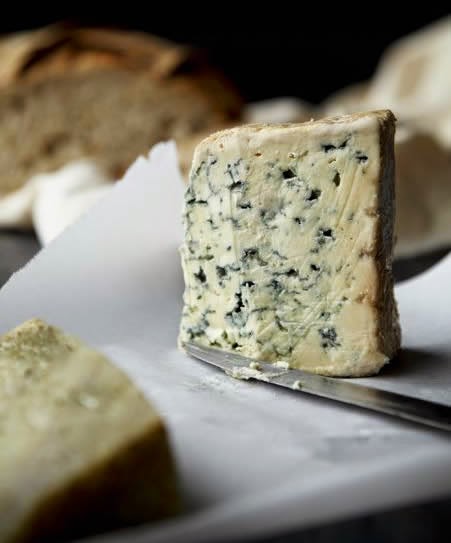 |
| Blue-Veined Cheeses |
Blue-veined cheeses
are created by the introduction of a blue mold into the milk before it thickens. The blue color, however, would not appear as the characteristic blue-green veins in cheeses without exposure to air. Therefore, the cheese is pierced with steel rods to let air circulate.
Most blue cheeses are made in the style of classic European blue cheeses. They can be firm or creamy and any color from chalk-white to golden-yellow. The flavor of these cheeses grows stronger with age. Although these cheeses are high in fat, only a small amount is typically used because of their strong flavor. Blue cheeses keep for 1 to 4 weeks after purchase.
Classic or blue-veined cheeses include:
Gorgonzola Sold in wheels, Gorgonzola is an Italian specialty. The interior of the cheese is white with veins that are usually more green than blue.
Roquefort Named for the area in France where the cheese is said to have originated, Roquefort has a crumbly texture and a sharp flavor. It is made from sheep’s milk.
Hard and Firm Cheeses  |
| Hard and Firm Cheeses |
This category is what most people think of when it comes to cheese. So-named because they become hardened with age, hard and firm cheeses include the well-known cheddar and Parmesan varieties.
They have a strong flavor and are widely used in cooking. They are also richer in calcium than softer cheeses because more milk is used in their production. However, this also means they are higher in fat and calories and so should be used in moderation in a healthful diet.
Hard and firm cheeses are divided into these categories:
Hard grating cheeses Hard grating cheeses include Parmesan and Romano. As the name suggests, they are often grated before use, but they can be served as chunks. Both cheeses originated in Italy. Parmesan cheese takes its name from the Parma region, where this cheese may be aged up to 4 years. Romano cheese probably originated in Rome. Italian versions are made from sheep’s milk; American versions, in contrast, are made from cow’s milk.
Both types are common toppings for Italian favorites such as spaghetti. In general, these cheeses have a tangy flavor and pleasing aroma. During production, they are heated to set the curd and reduce moisture. Aging enhances their flavor and results in their texture becoming more crumbly.
Cheddar-type cheeses Cheddar cheese originated in the English village of Cheddar and has since been adopted by cheese lovers all over the world. Cheddar’s distinct bite can range from mild to sharp, and the cheese is often seasoned with wine or spices. Cheddar cheese’s characteristic color is orange — the result of adding a natural vegetable coloring called annatto during production. Other cheddar-type cheeses include Cantal, Cheshire, Gloucester, Wensleydale, and Leicester.
Colby A blander, more moist cheese than cheddar, Colby was developed in Wisconsin a century ago.
Gruyère-type cheeses Carbon dioxide gases trapped inside the cheese while it is ripening create the characteristic “eyes” of this type of cheese. The cheese usually is a straw-yellow color and has a mild to rich, full flavor.
Monterey Jack A mild, light-colored cheese, Monterey Jack also may be spiced up with bits of jalapeno peppers, pepperoni, or herbs and spices.
Swiss cheese Known for the holes in it, Swiss cheese is a golden-yellow cheese and has a tangy flavor. The holes in it are caused by pockets of gas that develop when the cheese is made.
Processed Cheeses Processed cheese is the most common type of cheese eaten in the United States, where it was originally developed. In processed cheese, one or more types of cheese are heated (which stops the aging process) and melted. An emulsifier is then added as a binding agent.
Additional dairy ingredients may be added, such as cream, whole or skim milk, buttermilk, or dried milk. Depending on the process, other thickeners or emulsifiers may be added for firmness and smoothness. A common type of processed cheese is American cheese, which is usually derived from cheddar cheese.
Processed cheeses have a mild flavor and melt easily and smoothly. They have a number of uses, from spreads to pasta toppings to dips. However, there are nutritional trade-offs. Processed cheeses are often higher in sodium than traditional cheeses and are somewhat lower in protein and other nutrients.
 |
| Infographic flavors of cheese (click to enlarge) |
The U.S. Food and Drug Administration (FDA) closely regulates the composition of processed cheese. Label terms that indicate you are using a processed cheese include pasteurized process cheese, cheese food, and cheese spread.
Preparation Tips To get the most flavor from your cheese, it should be allowed to warm to room temperature. Therefore, take cheese out of the refrigerator an hour in advance of when you plan to serve it. Keep the wrapper intact so the cheese does not dry out.
The opposite is true if you plan to grate cheese. It grates better when it is cold, and 10 minutes in the freezer speeds the process.
When melting cheese, use a gradual, medium heat, because it can turn rubbery when heated at a high temperature.
Serving Suggestions Because most cheese is high in fat — about 40 percent of which is saturated — it should accompany other foods rather than be the centerpiece of a meal. Also, most cheeses are high in sodium because of the salt used for curing and flavoring.
That said, the flavor and texture of cheese mean that large quantities are not needed to enjoy it. Cheese is excellent as a garnish for soups and salads. Or, crumble bits of real blue cheese on your salad instead of pouring on fat-filled blue cheese dressing.
The result is a more authentic blue cheese taste with less fat and fewer calories. Top pasta with a small serving of grated cheese, such as Romano or Parmesan, but lean heavily on a vegetable-based sauce. Use a single slice of cheese atop a veggie-filled sandwich, or trade the cheese for a lean slice of turkey.
When making nachos, sprinkle baked tortilla pieces lightly with sharp cheddar cheese and then top the chips with plenty of healthier options: vegetables, beans, and salsa. If you have a craving for pizza, make your own. Take-out pizzas, especially if ordered with extra cheese, can supply the entire day’s fat supply with one piece.
 |
| Wine and cheese pairings |
